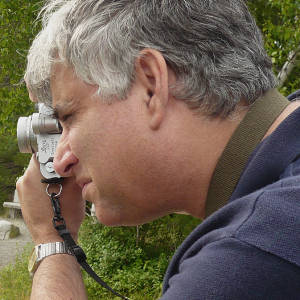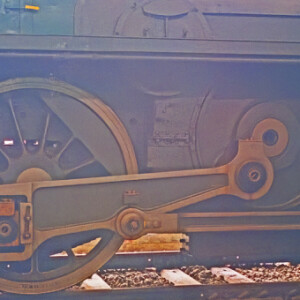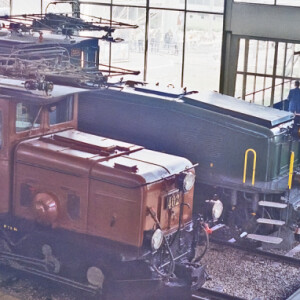Meet The Crocodile! Voigtlander Color-Skopar 28mm
A few days ago, fellow Blipper, Rower2012, published a Blip from his visit to the National Railway Museum in York. It reminded me of a visit my Editor and I made to the Swiss Transport Museum outside Luzerne. That was back in 2004.
One of the most fascinating exhibits – in my opinion – is the remarkable electric locomotive, the SBB Class Ce 6/8, known as “The Crocodile”.
Some background is necessary.The locomotives were developed specifically for the terrain in which they would operate: the mighty Saint-Gotthard Pass which traverses the Alps between German and Italian-speaking Europe. The center piece of this monument to human endeavor, ingenuity and achievement is a nearly 15 kilometer-long tunnel which spirals inside the mountain beneath the Saint-Gotthard massif. The purpose of the spiral is to allow the railway line to gain and lose height, and still keep the gradients to a workable limit for the locomotives. The pass opened to traffic in 1882 with the trains hauled by steam locomotives. It immediately became clear that the steam and smoke captured in the long tunnel were a serious risk to the health of not only the train crews, but the passengers. The answer was to develop electric locomotives, but the technology was not yet available. It took until 1919 when the Crocodiles – some fifty of them – began to work over the pass.
First, there had to be the infrastructure to supply electricity to the railway. This was relatively easy to accomplish, as Switzerland has abundant hydro-electric power capacity. Then, the engineers had to develop a locomotive design which provided plenty of tractive effort to deal with the gradients, and, at the same time was able to negotiate the tight curves on the pass.
The Crocodiles could do all of that. There are essentially two locomotives, each having six driving wheels, centered around a cab for the driver, with the ability for the driving wheels to articulate independently of the cab, and thus insinuate the machinery around the mountain curves. We have encountered this concept before in a previous Blip: I described the Garratt steam locomotive. The Crocodile is its electrically-powered equivalent with the massive step-down transformer in the middle between the cabs, supplying not only current to the four traction motors, but its weight to give adhesion to the driving wheels. As if there isn’t enough homage to the Garratt, the Crocodile uses huge Jackshafts and coupling rods to transfer the rotary motion of the motors to the wheels, just like a steam locomotive, but without pistons and valve gear. It’s ingenious.
Nobody could accuse the Crocodiles of being great beauties: they’re all business, with a maximum speed of just 65kph. Three or four survive, and have been preserved for historic runs over the Saint-Gotthard, quite a sight to behold. The pass was superceded for regular traffic in 2016 by the 57 kilometer-long Base Tunnel, shaving significant time off the trip over the Alps, but with none of the charm and grandeur which the original route offered.
A note about the images for this Blip: they were taken with my lovely old 1936-vintage Leica IIIA with a Voigtlander 28mm lens, a modern lens designed specifically to work with Leica thread-mount cameras. The film was Fuji Press 800 ISO. I scanned from the original negatives today to combine the best of analog and digital technologies in the service of this tale.
The first Extra shows a detail of the Jackshaft which couples the rotary motion of the electric motor to one pair of the driving wheels at each end of the locomotive. Coupling rods then transfer that motion to the other driving wheels.
Here is a most informative article about the Crocodiles for those that are interested. And here is a You Tube clip of the beasts in action.



Comments
Sign in or get an account to comment.


